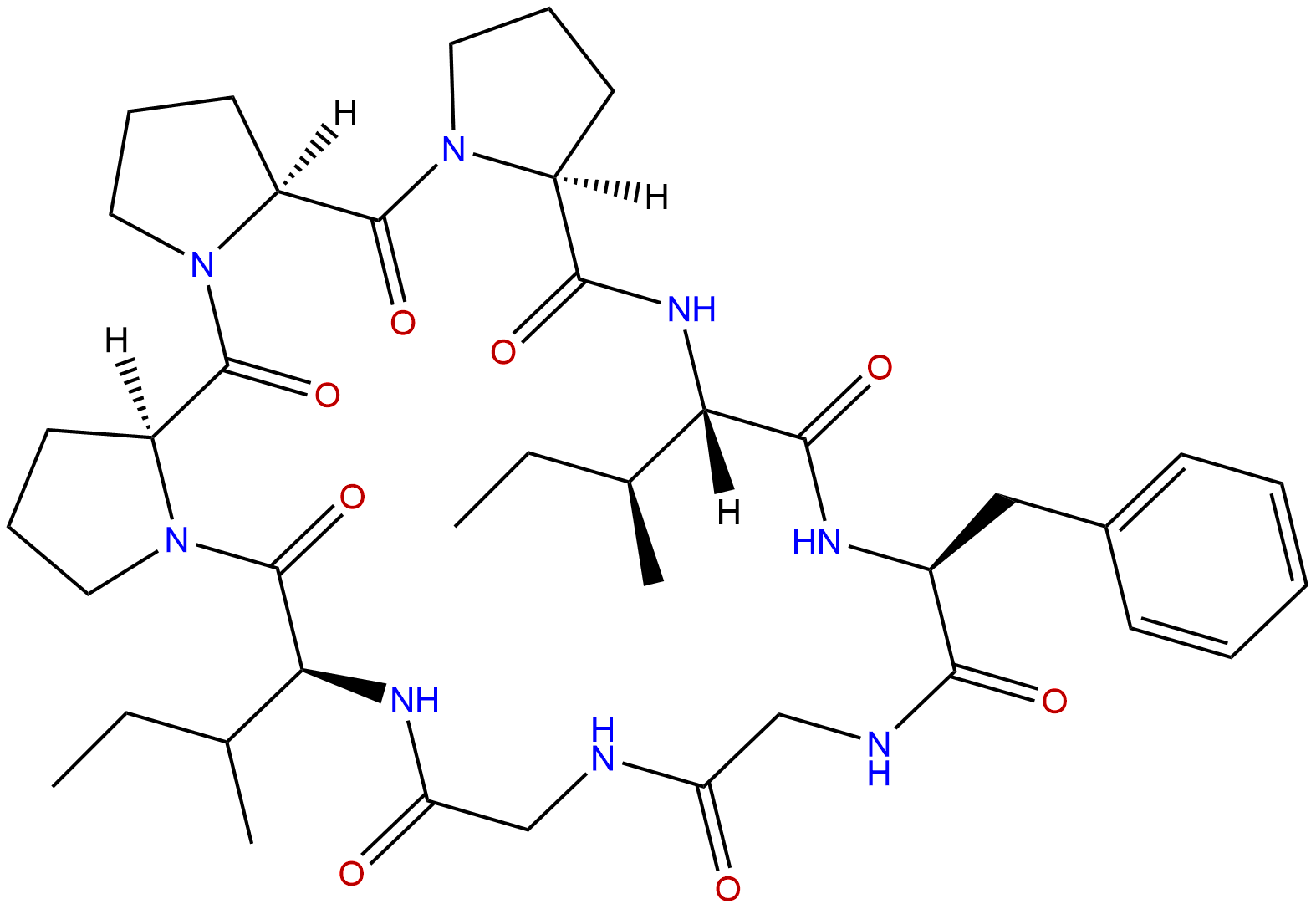
Heterophyllin BCAS No.:145459-19-4
|
||||||||||
 |
|
|
||||||||

| Catalogue No.: | BP0727 |
| Formula: | C40H58N8O8 |
| Mol Weight: | 778.952 |
Synonym name:
Catalogue No.: BP0727
Cas No.: 145459-19-4
Formula: C40H58N8O8
Mol Weight: 778.952
Botanical Source: Root of Pseudostellaria heterophylla
Purity: 95%~99%
Analysis Method: HPLC-DAD or/and HPLC-ELSD
Identification Method: Mass, NMR
Packing: Brown vial or HDPE plastic bottle
Can be supplied from milligrams to grams.
For Reference Standard and R&D, Not for Human Use Directly.
Inquire for bulk scale.
Description:
Heterophyllin B is used as the quality control index for evaluating P. heterophylla in the Chinese Pharmacopoeia.Heterophyllin B effectively suppresses the adhesion and invasion of the human esophageal carcinoma cells by mediating the PI3K/AKT/β-catenin pathways and regulating the expression levels of adhesion- and invasion-associated genes.
References:
Mol Med Rep. 2016 Feb;13(2):1097-104.
Heterophyllin B inhibits the adhesion and invasion of ECA-109 human esophageal carcinoma cells by targeting PI3K/AKT/β-catenin signaling.
The present study aimed to measure the effect of Heterophyllin B (HB) on the adhesion and invasion of ECA-109 human esophageal carcinoma cells, and examine the possible mechanism involved.
METHODS AND RESULTS:
A Cell Counting kit 8 assay was performed to determine the cell viability. Cell adhesion and invasion were determined following treatment of the ECA-109 cells with HB (0, 10, 25 and 50 μM) for 24 h. The levels of phosphorylated (p-)ATK and p-phosphoinositide 3-kinase (PI3K), and the protein levels of β-catenin were measured using western blot analysis. The mRNA and protein expression levels of E-cadherin, vimentin, snail, matrix metalloproteinase (MMP)2 and MMP9 were detected using reverse transcription-quantitative polymerase chain reaction and western blot analyses, respectively. HB (10, 25 and 50 μM) significantly suppressed the adhesion and invasion of the ECA-109 human esophageal carcinoma cells in a dose-dependant manner. The expression levels of p-ATK, p-PI3K and β-catenin were markedly decreased. The expression of E-cadherin was promoted, whereas the expression levels of snail, vimentin, MMP 2 and MMP 9 were decreased significantly in the ECA-109 cells treated with HB. In addition, HB inhibited the adhesion and invasion induced by PI3K activating peptide in the ECA-109 cells, and the protein expression levels were also adjusted.
CONCLUSIONS:
These results suggested that HB effectively suppressed the adhesion and invasion of the human esophageal carcinoma cells by mediating the PI3K/AKT/β-catenin pathways and regulating the expression levels of adhesion- and invasion-associated genes.